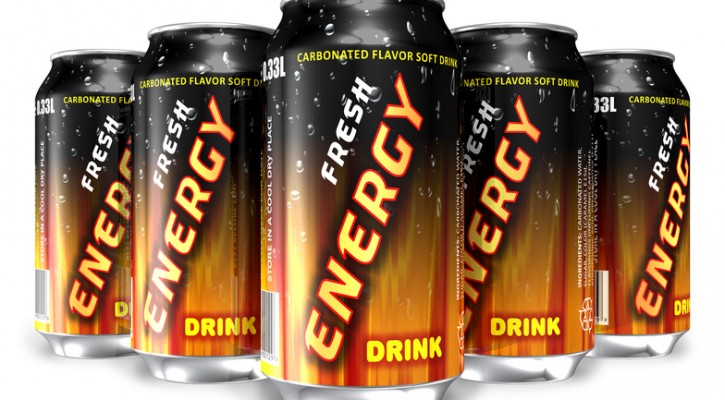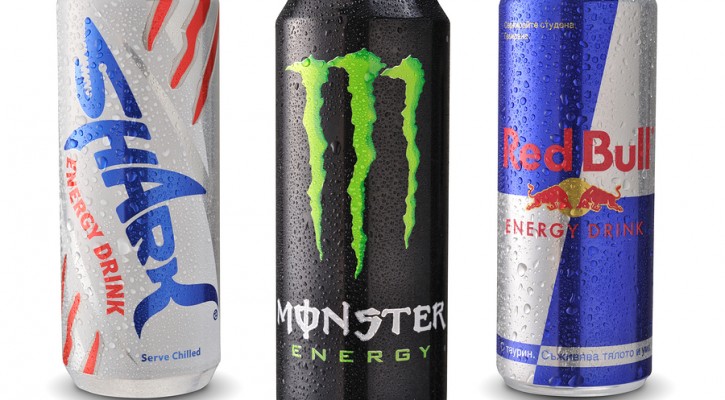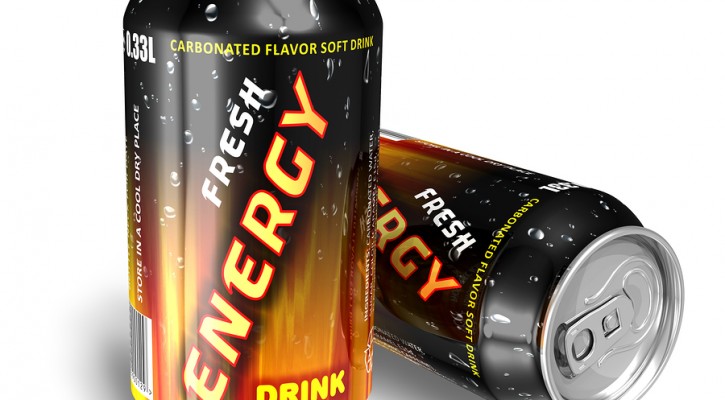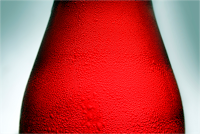Search results for "The Effects of Energy Drinks and Driving"

The Effects of Energy Drinks and Driving
December 11, 2009
There are many common misconceptions about energy drinks. Since they are marketed as supplements (and often times sold in health food stores), many people assume they are healthy. Or at the very least they assume energy drinks are not unhealthy. However, energy drinks are more harmful than many people realize. The FDA regulates how much caffeine a company can put in its soft drinks. A 12 ounce soft drink may have no more than 71 mgs of caffeine. However, many energy drink makers have found a way around these restrictions. By marketing their products as supplements, instead of soft drinks they are able to put as much caffeine as they wish into their drinks. Some energy drinks on the market have over double the amount of caffeine the FDA allows in soft drinks.
Ingesting such high amounts of caffeine causes people to go into an altered state, known as caffeine intoxication. Many characteristics of caffeine intoxication are similar to the characteristics of alcohol intoxication. People experiencing caffeine intoxication experience twitching muscles, increased irritability, and slurred speech. Additionally, people who drink energy drinks often become more willing to take risks and are more likely to become distracted. It is a recipe for disaster when a distracted, irritable person who is likely to take risks gets behind the wheel of a car.
When a person uses energy drinks to compensate for missing a good night’s sleep it becomes far more dangerous. Caffeine cannot compensate for the mental and physical alertness that a person gets from a full night of sleep. For a short time caffeine may seemingly do the trick. The effects of the caffeine in energy drinks may help mask a driver’s fatigue for a short while. However, when the effects begin to wear off drivers become increasingly more fatigued and their reaction times and ability to concentrate suffer greatly. Many people describe a crashing effect and they become more acutely aware of their mental and physical fatigue. This feeling is commonly referred to as crashing, which can be likened to the hangover people have the day after a long night of drinking.
Instead of turning to caffeine drinks for artificial energy people preparing to go on a long drive should get a full night of sleep. Additionally, they should take frequent stretch breaks, stay hydrated and take power naps if needed to ensure they are mentally and physically alert on the road.
Read more driver safety tips and dangers related to energy drinks at National Safety Commissions Driver Alerts Blog.

Another Teen Dies As A Result Of Energy Drinks
June 29, 2015
A a sixteen year old girl from Arizona died reportedly after drinking too many energy drinks.
Lanna Hamann a sixteen year old girl from Arizona was vacationing in Mexico with family and friends. After spending time out in the sun on a Mexican beach, she complained of not feeling well and difficulty in breathing. She was taken to a local clinic where she suffered a cardiac arrest and doctors were unable to revive her. An autopsy later showed that consumption of energy drinks contributed to her death.
An otherwise healthy and athletic teen, friends of Lanna reported that she loved Red Bull and, instead of staying hydrated with water, had consumed several on the day she died. According to health experts, the large amount of sugar and caffeine in the drinks can affect blood pressure and heart rhythms.
We have reported on the dangers of highly sweetened and caffeinated energy drinks and their effects on driving in the past. We have also reported on the health dangers posed by overdosing on caffeine. Health experts have reported that emergency room visits related to the use of energy drinks have doubled over the past several years.
Young people need to be aware of the dangers these drinks can pose, especially if more than one drink is consumed. Caffeine in large amounts can lead to health issues, including cardiovascular problems, seizures, and hallucinations.
The conditions on a hot day at the beach can increase the dangers posed by energy drinks. In hot weather, it’s easy to become dehydrated. According to WebMD.com, dehydration can lead to
- Weakness
- Dizziness
- Palpitations (feeling that the heart is jumping or pounding)
- Confusion
- Sluggishness fainting
- Fainting
- Inability to sweat
- Decreased urine output
Staying hydrated by using water or fruit drinks is important. Caffeinated drinks have a diuretic effect that keeps the body from retaining fluids. The effects of dehydration combined with the effects of high amounts of caffeine can increase the risk of health problems.
Read more: Energy Drinks Blamed For Vacation Death Of 16-Year-Old Girl

Energy Drink Related Emergency Room Visits Double
April 30, 2014
According to a report released in January 2013 by the Substance Abuse & Mental Health Services Administration, ER visits related to the use of so called energy drinks doubled from 10,068 visits in 2007 to 20,783 visits in 2011.
We were among the first to write about the issue of energy drinks and their effect on health and driving back in 2009 and have published several articles since but the warning bears repeating.
Energy drinks contain large amounts of caffeine and sugar and are marketed mostly toward young people as a way to gain energy, stay awake, or lose weight. Energy drinks are unregulated and there are really no limits on how much caffeine can be added to a drink.
The problem comes when young people, with their busy schedules, try to use the energy drink as a substitute for sleep. Once the effect of the caffeine wears off, a sleep deprived person will not be able to remain awake.
Another problem is “caffeine intoxication” which comes from overdosing on caffeine, leading to anxiety, excitability, restlessness, and an inability to concentrate. Caffeine in large amounts can lead to even greater health issues, including cardiovascular problems, seizures, and hallucinations.
A real danger comes when the energy drinks are mixed with alcohol or other drugs. According to the report, “bar patrons who consumed alcohol mixed with energy drinks were 3 times more likely to leave a bar highly intoxicated and were 4 times more likely to intend to drive while intoxicated than those who did not consume alcohol mixed with energy drinks.”
The report went on to say: “Of the 20,783 ED visits involving energy drinks in 2011, 58 percent involved energy drinks only and the remaining 42 percent involved other drugs. Pharmaceuticals were most commonly combined with energy drinks (27 percent), with 9 percent involving energy drinks and central nervous system stimulants (e.g., Adderall®, Ritalin®). About 13 percent of visits involved energy drinks and alcohol and one tenth of visits (10 percent) involved energy drinks and illicit drugs, with 5 percent involving energy drinks and marijuana.”
Some health experts have called for the FDA to regulate energy drinks and to place warnings on the labels. Canadian health officials enacted regulations beginning in January 2013 that limit the amount of caffeine in one drink to 180 mg or roughly the same amount as that contained in an eight ounce cup of coffee.

Be Aware of “Black out in a can” or “Liquid Cocaine?”
December 2, 2010
Lately, there has been much attention given to a new version of alcoholic drinks that are gaining popularity. The specific brands cited are Four Loko, Joose, Max and Torque combine large does of alcohol with caffeine. These drinks are marketed to youth, with colorful packaging and flavors including grape, fruit punch, watermelon, and lemonade. Four Loko is said to contain the alcohol equivalent of up to five beers (12 percent alcohol) and the caffeine of one cup of coffee plus a can of Red Bull. The caffeine buzz delays the ability to feel the effect of the alcohol or monitor their body’s response. Before the drinker is aware, they have consumed several beers at once and are on a caffeine high, increasing the likelihood of alcohol poisoning. Because alcohol poisoning is so frequent after drinking these drinks, the term “black out in a can” has become a common nickname for these alcohol energy drinks.
These drinks first caught the attention of doctors, hospitals, police, and government officials as they began to warn the public of the dangers the drinks pose and tried to force changes in packaging, warnings and content. The containers look attractive and to the unknowing eye could easily mistake the beverage for an energy drink. The terms “liquid cocaine” or “cocaine in a can” are also used as slang for these drinks, because of the high amount of caffeine, taurine and guarana. The risk of caffeine intoxication is high and symptoms after consuming the drink include restlessness, increase in blood pressure, heart rate and heart palpitations. Emergency Room doctors report that patients are coming into hospitals drunk and also complaining that their hearts are pounding out of their chests.
But now, the alarm level has risen, as college and university campuses across the United States are banning the drinks as well. The University of Florida conducted a study published in the journal Addictive Behaviors. The study found that of the patrons exiting bars, those who drank energy drinks mixed with alcohol were three times at risk of leaving a bar highly intoxicated and were four times more likely to intend to drive after drinking than bar patrons who drank alcohol only. “There’s a very common misconception that if you drink caffeine with an alcoholic beverage the stimulant effect of the caffeine counteracts the depressant effect of the alcohol and that is not true,” said study co-author Bruce Goldberger a professor and director of toxicology in the UF College of Medicine. “We know that caffeine aggravates the degree of intoxication, which can lead to risky behaviors.” ABC News interviewed Doctor Mary Claire O’Brien of Wake Forest University on the study she conducted on the effects of combining alcohol and caffeine. Her results showed that students who mix caffeine and alcohol are “twice as likely to be injured, require medical attention, ride with an intoxicated driver, and more than twice as likely to take advantage of someone sexually.”
Colleges are not the only ones to feel the effects. Nickie Gorce, Director of Prevention with EPIC Community Services, has seen a large increase in alcohol-related referrals to her agency. Many of the referrals are for youth and young adults under the legal drinking age of 21. “Their impulsive behavior after consuming these types of drinks would appear to be out of control, which is frequently the result when adolescents or young adults binge drink (5 or more drinks in rapid succession). The increased risk taking behavior such as driving under the influence is an unintended outcome when individuals consume alcohol energy drinks. In addition, the Blood Alcohol Content (B.A.C.) level after consuming just one of these beverages like Four Loko may be twice the legal limit.”
With both the alcohol and caffeine being diuretics, dehydration is another real risk leading to other health complications as well, including a terrible hangover. When the intoxication effects wear off, not only do you have a crash from the high doses of alcohol, there is also a caffeine crash that occurs with most people.
Several states, including Michigan, Washington, Utah, Oklahoma and New York have banned the sale of these drinks and some vendors are voluntarily removing them from the shelves. As the safety concerns mount, the Food and Drug Administration has been reviewing the products and has stated they want the drink in its current state to be removed from shop shelves by December 13.
